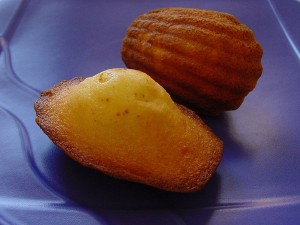Next month marks the 100th anniversary of the publication of a book I’m reading at the moment — Swann’s Way, the first volume of Marcel Proust’s six-volume masterpiece In Search of Lost Time
. “The novel”, writes Professor Andre Aciman in a nice WSJ essay, “is about a man compelled by a sudden surge of memory to revisit his past and, in the process, to draw meaning out of his seemingly uneventful life. Its unfolding is prompted, famously, by the narrator’s dunking of a madeleine in a cup of herbal tea.
Untold universities have planned at least one reading or roundtable dedicated to Proust. Every self-respecting bookstore will hold its own Proustathon, with authors, actors and book lovers reading snippets from his epic novel. The Center for Fiction in New York has scheduled a Proust evening, and the French embassy is organizing its own Proust occasion. There are Proust T-shirts, Proust coffee mugs, Proust watches, Proust comic series, Proust tote bags, Proust fountain pens, and Proust paraphernalia of all stripes.
Still, for all the brouhaha, many modern readers still find themselves in agreement with the two French publishers who turned down Proust’s manuscript in 1912. A third agreed to publish it, provided that Proust himself cover the expenses. As one early reader declared: “At the end of this 712-page manuscript…one has no notion of…what it is about. What is it all for? What does it all mean? Where is it all leading to?”
Where indeed?
We now have plenty of ways to easily document the sights and sounds of our everyday lives, whether for social networking or posterity. But what about smells — a perfume that might remind you of a lover, say, or the aroma of roast dinner in your grandparents’ home?
What if we had a way to capture these fleeting olfactory memories before they disappear into thin air? Amy Radcliffe, a designer at Central St Martin’s art school in London came up with the idea of a device that could capture and reproduce odours accurately. She called it — what else? — the Madeleine. It is, she writes
to all intents and purposes, an analogue odour camera. Based on current perfumery technology, Headspace Capture, The Madeleine works in much the same way as a 35mm camera. Just as the camera records the light information of a visual in order to create a replica The Madeleine records the molecular information of a smell.
Lovely idea.

